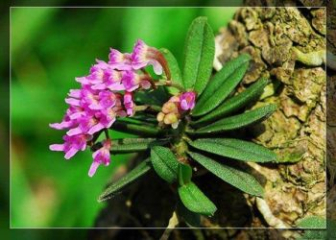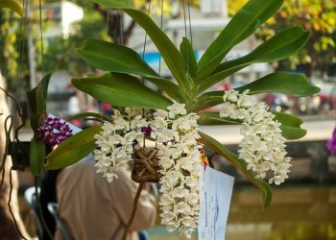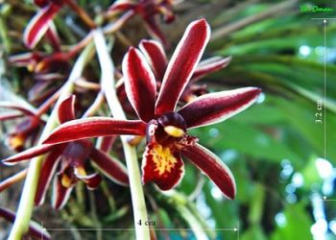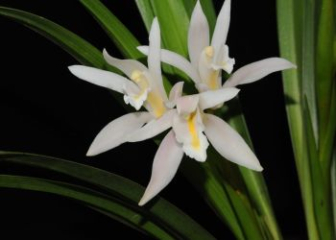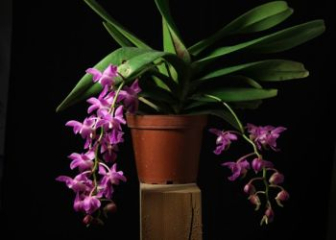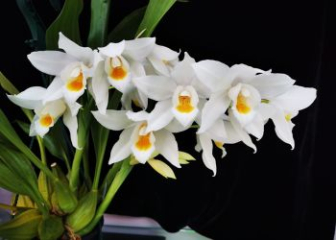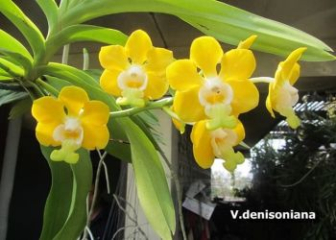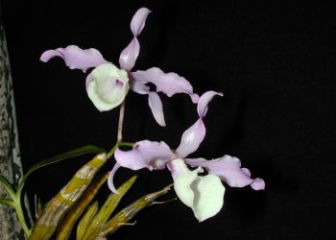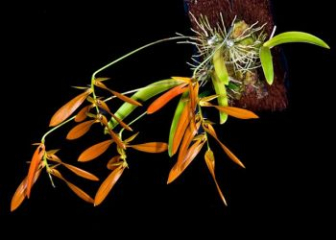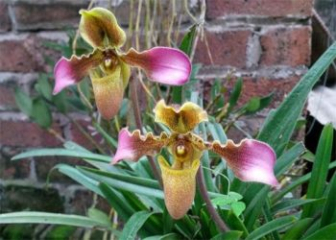Bulbophyllum Orchids – The Largest and Most Bizarrely Shaped Orchid Genus in the World
Blog | by
The Bulbophyllum genus is the largest orchid genus in the world, boasting over 1,800 species of uniquely shaped, strange, and highly collectible flowers that are greatly admired by enthusiasts.
In the diverse world of orchids, Bulbophyllum orchid stands out as one of the most extensive genera, renowned for its unusual beauty and striking appearance. With artistically peculiar flower shapes — from long, twisted petals like threads, bunny ear-shaped blooms, and star-like forms to lantern-shaped flowers — Bulbophyllum consistently amazes viewers with its extraordinary and surreal charm.
In today’s article, orchid will guide you through an in-depth exploration of the origin, morphological characteristics, and some of the most popular Bulbophyllum species today. Let’s dive in and discover more right here!
Introduction to the Bulbophyllum Genus
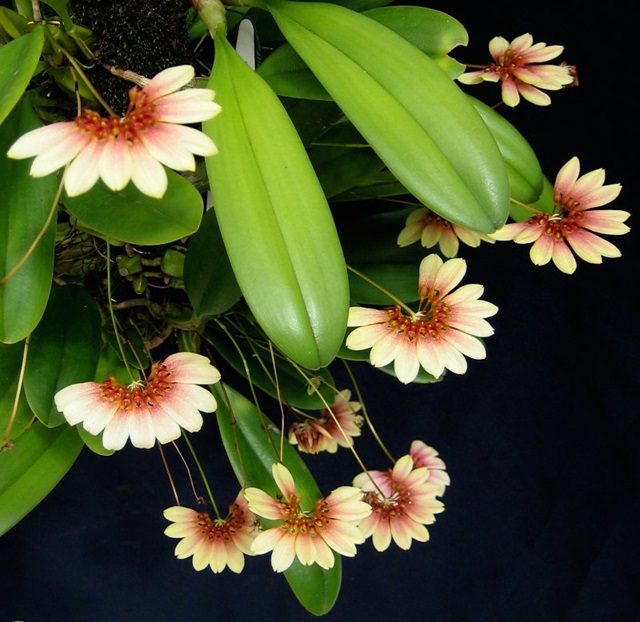
Bulbophyllum – One of the Largest Orchid Genera in the World
The Bulbophyllum genus (abbreviated as Bulb) is one of the largest genera in the Orchidaceae family, comprising over 1,800 distinct species. It was first described in 1822 by French botanist Louis-Marie Aubert du Petit-Thouars.
The name “Bulbophyllum” originates from two Greek words:
-
“bulbos” – meaning bulb
-
“phyllon” – meaning leaf
→ When combined, the name refers to the swollen pseudobulbs of the Bulbophyllum genus, which resemble onions, each typically bearing a single leaf.
Today, Bulbophyllum orchids are most diversely distributed in the tropical rainforests of Southeast Asia, particularly in Papua New Guinea, Indonesia, Vietnam, and Thailand. In addition, various Bulbophyllum species can also be found across Africa, Oceania, and the Americas.
Thanks to their unique appearances — such as long petals, twisted or drooping floral parts, mobile lips, and unusual scents — Bulbophyllum orchids have become one of the most collectible and rare groups among wild orchids.
Notably, several species are listed in the Red Data Book, including:
Bulbophyllum filiforme, Bulbophyllum kupense, Bulbophyllum nigericum, Bulbophyllum rubrolabellum, and others.
General Characteristics of the Bulbophyllum Genus
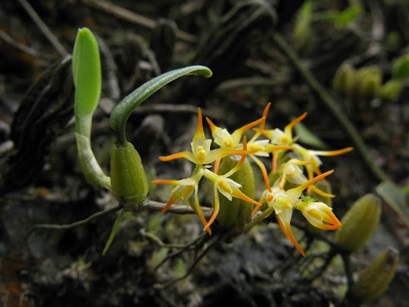
Bulbophyllum Orchids Typically Have Plump, Short Pseudobulbs and a Single Leaf
Let’s explore some common characteristics regarding morphology, natural habitat, and the collectible value of orchids in the Bulbophyllum genus.
General Morphological Characteristics
Most Bulbophyllum species share common features in terms of stems, leaves, roots, and flowers, specifically:
-
Stem: Generally features small pseudobulbs that are round or oval-shaped, growing successively along creeping rhizomes.
-
Leaves: Each pseudobulb usually supports only one single leaf.
-
Rhizome: Grows horizontally and clings tightly to the growing medium.
-
Roots: Thick, white roots.
-
Flowers: Remarkably unique structures; some species have slender, long, twisted, star-shaped, umbrella-shaped, or even beard-like petals.
-
Labellum (lip): Small and sensitive to wind, it trembles slightly to attract insects for natural pollination.
-
Fragrance: Most Bulbophyllum species emit a sour, somewhat unpleasant odor (similar to rotting flesh) to attract pollinators. Only a few species have a pleasant fragrance.
Habitat Characteristics
Bulbophyllum orchids are typically epiphytes, growing on rocks or wood in dense, humid forests with cool climates and diffused light levels of 50–70%, along with good air circulation.
High Collectible Value
Most Bulbophyllum species are highly sought after and valued by collectors due to their uniquely artistic flower forms, which provide a visually intriguing experience for growers. These orchids are especially suitable for mounting on driftwood, bonsai-style displays, or miniature landscape arrangements.
Popular Bulbophyllum Species
Below are some of the most popular Bulbophyllum orchid species today. Let’s take a closer look and discover the fascinating traits of this remarkable orchid genus!
Bulbophyllum roxburghii (Pink Bulbophyllum)
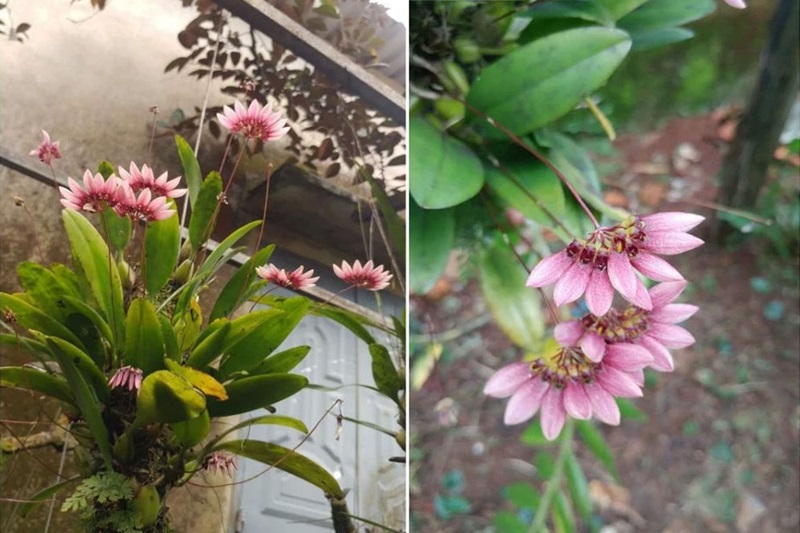
Pink Bulbophyllum – Strikingly Beautiful in Form and Color
The Pink Bulbophyllum, scientifically known as Bulbophyllum lepidum, is one of the most beloved species in the Bulbophyllum genus today. It features elegant clusters of symmetrically rounded flowers that resemble tiny pink-purple parasols. This species is commonly found in Vietnam’s Central Highlands, including provinces such as Lâm Đồng, Kon Tum, and others.
Characteristics of the Pink Bulbophyllum:
-
Pseudobulbs: Grow at intervals along a creeping rhizome; each pseudobulb bears a single, thick, lance-shaped leaf.
-
Flowers: Bloom in rounded, umbrella-like clusters, each inflorescence containing 10 to 30 small flowers.
-
Petals: Delicate pinkish-purple in color with fine, soft hairs along the edges.
-
Stamens: Usually white or pale yellow.
-
Fragrance: Unlike many other Bulbophyllum species that emit a sour or unpleasant odor, this species has a gentle and pleasant scent.
-
Blooming Season: Typically flowers from September to December (Gregorian calendar).
-
Longevity: Blooms last for about 7 to 15 days.
Bulbophyllum spicatum (“Rice” Bulbophyllum)

A Cluster of “Rice” Bulbophyllum with Dangling Flowers Resembling Grain Stalks
The "Rice" Bulbophyllum, scientifically named Bulbophyllum careyanum, is a uniquely shaped species in the Bulbophyllum genus, known for its graceful, arched flower clusters that resemble ripened stalks of rice swaying in the wind. This distinctive species is typically found in humid tropical forests across the Central Highlands of Vietnam, as well as in Laos, Thailand, and Myanmar.
Characteristics of the “Rice” Bulbophyllum:
-
Pseudobulbs: Multi-segmented, with each pseudobulb producing a single leaf closely attached to the growing surface.
-
Leaves: Thick and narrowly elongated.
-
Flowers: Grow in long, drooping clusters that form the shape of a rice stalk — the inspiration behind the common name "Rice" Bulbophyllum.
-
Petals: Slender, usually in creamy yellow or pale yellow hues; each floral spike can bear 10 to 30 flowers.
-
Fragrance: Emits a mildly sour scent, which is characteristic of many Bulbophyllum species.
-
Blooming Season: Typically blooms from September to November.
-
Flower Longevity: Blooms remain fresh for 1 week to 10 days.
Bulbophyllum retusiusculum (“Slipper” Bulbophyllum)
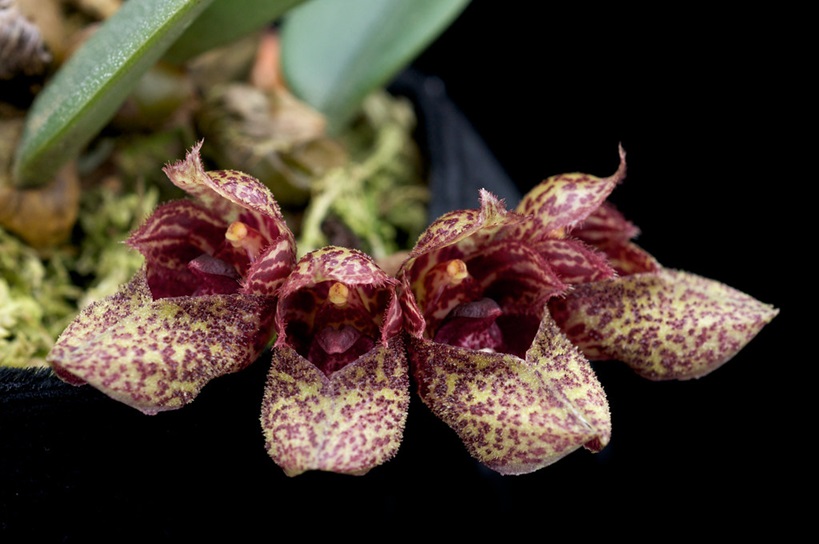
Slipper-Shaped Bulbophyllum – Flowers Resembling Tiny Shoes
The Slipper Bulbophyllum, scientifically named Bulbophyllum frostii, is a rare and uniquely shaped native orchid of Vietnam. This species stands out for its flower clusters that resemble miniature slippers or shoes, making it a highly distinctive and sought-after orchid among collectors.
Characteristics of the Slipper Bulbophyllum:
-
Pseudobulbs: Small, egg-shaped, and grow closely together.
-
Leaves: Single, emerging from the top of each pseudobulb; narrow and pointed.
-
Flowers: Grow in clusters from the base of the pseudobulb. Each flower has a slipper-like shape, typically deep reddish-brown or purplish-brown, adorned with striking speckled patterns.
-
Labellum (lip): Small and elliptical, capable of subtle movement to attract insect pollinators.
-
Fragrance: Mildly fermented scent, characteristic of many Bulbophyllum species.
Bulbophyllum gracillimum (“Swallow” Bulbophyllum)
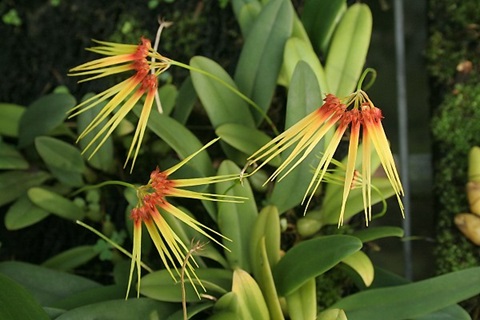
Swallow-Tail Bulbophyllum – Petals Like a Swallow’s Tail
The Swallow-Tail Bulbophyllum, also known as Bulbophyllum gracillimum or Bulbophyllum swallow-leaf, is a visually striking wild orchid species. It is admired for its long, narrow lower petals that resemble the graceful tail feathers of a swallow in flight.
Characteristics of the Swallow-Tail Bulbophyllum:
-
Pseudobulbs: Small, oval-shaped, each bearing a single, narrow, elongated leaf.
-
Flowers: Grow in clusters, emerging from the leaf axils.
-
Inflorescence: Each cluster typically has 4 to 10 small flowers, with long, slender, pointed lower petals resembling swallow tails.
-
Color: Flowers are usually pale yellow or creamy white in color.
Bulbophyllum medusae (“Star” Bulbophyllum)
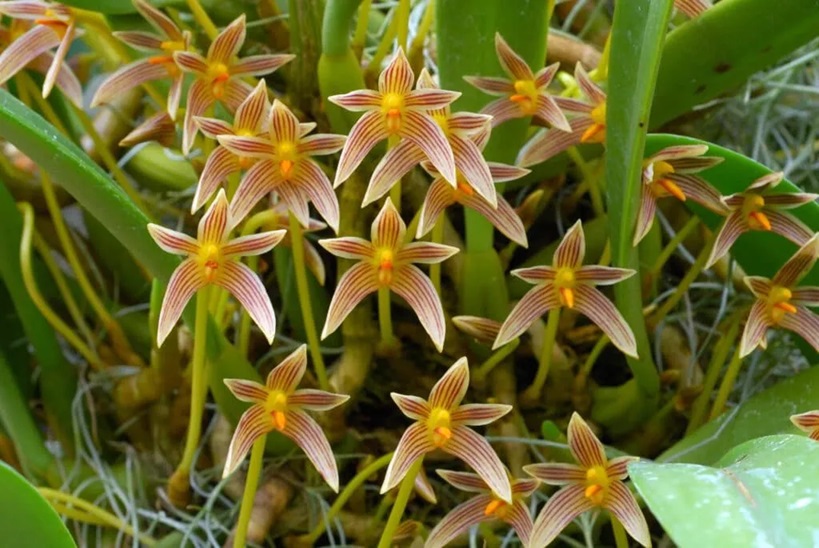
Star-Shaped Bulbophyllum – Flowers Resembling a Five-Pointed Star
The Star Bulbophyllum, scientifically known as Bulbophyllum affine, is a rare and distinctive wild orchid species. It is easily recognized by its symmetrical flowers shaped like five-pointed stars and, unlike many other Bulbophyllum species, it lacks the typical unpleasant scent. This orchid is commonly found in Vietnam’s Central Highlands, particularly in provinces such as Kon Tum and Lâm Đồng.
Characteristics of the Star Bulbophyllum:
-
Pseudobulbs: Small, growing close to the substrate; each pseudobulb bears a single leaf.
-
Leaves: Emerge from the top of the pseudobulb, usually deep green in color.
-
Flowers: Notably symmetrical, forming a clear five-pointed star shape. Petals are long, slender, and slightly curved.
-
Color: Typically lemon yellow or pale green, accented with bold reddish-brown stripes on the petals for a striking appearance.
-
Fragrance: Light and pleasant, without the usual sour or fermented smell of many other Bulbophyllum species.
-
Blooming Season: Flowers bloom from September to November, lasting about 7 to 10 days.
Bulbophyllum lasiochilum (“Bunny-Ear” Bulbophyllum)
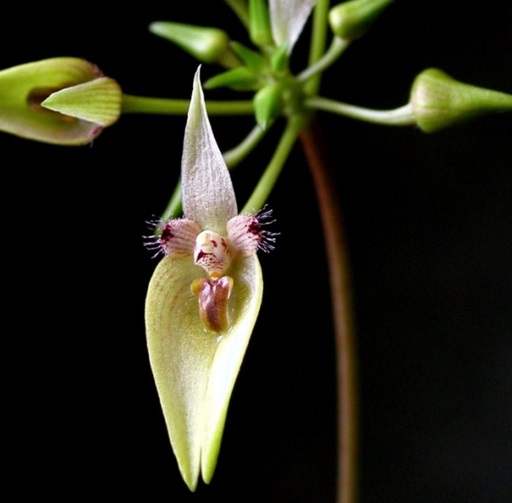
Bunny-Ear Bulbophyllum – A Flower with an Adorably Unique Shape
The Bunny-Ear Bulbophyllum, scientifically known as Bulbophyllum blepharistes, is one of the most charming species in the Bulbophyllum genus. Its distinctive upright, elongated petals resemble rabbit ears, giving the flower a playful, endearing appearance. In addition to its aesthetic appeal, this species is easy to grow and blooms readily, making it a favorite among artistic orchid collectors.
Characteristics of the Bunny-Ear Bulbophyllum:
-
Pseudobulbs: Small, round or oval-shaped, growing close together and connected by creeping rhizomes.
-
Leaves: Thick and grow from the top of the pseudobulb.
-
Flowers: Solitary, each bloom arising from a long stalk. The upper petals are long and upright, resembling bunny ears, with fine hairs along the edges.
The lip is small, highly sensitive, and mobile. Flower color varies from pinkish-purple, reddish-purple, to rosy yellow with soft stripes or faint purple dots. -
Fragrance: Mildly sour or sometimes odorless, depending on the individual plant.
-
Blooming Season: Typically blooms from September to November, with each flower lasting 5 to 10 days. Since blooms appear sequentially, a single inflorescence may flower continuously for several weeks.
Bulbophyllum lasiochilum (“Mouse-Ear” Bulbophyllum)
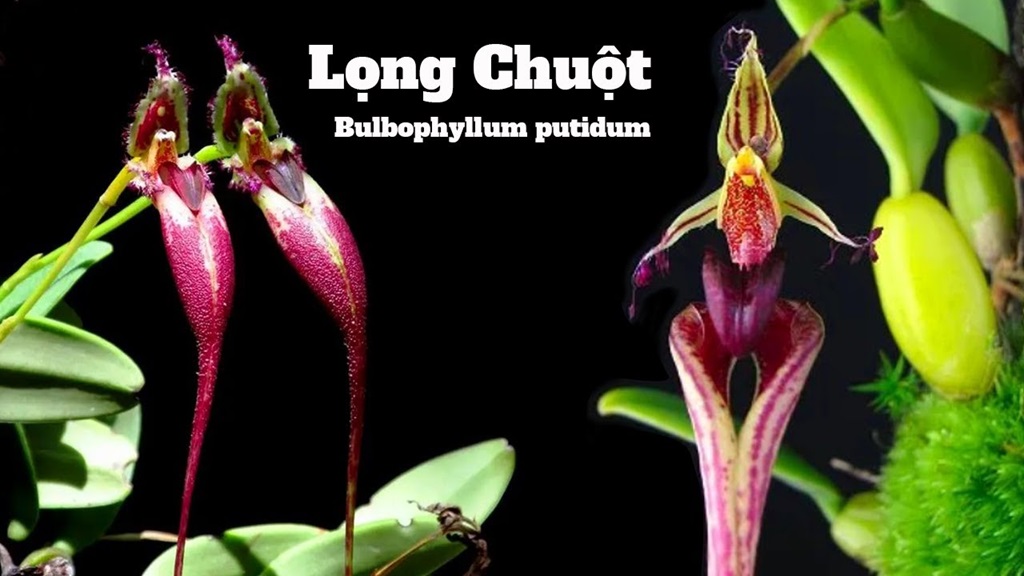
Mouse-Ear Bulbophyllum – Uniquely Shaped and Colored Blooms
The Mouse-Ear Bulbophyllum, scientifically named Bulbophyllum putidum, is a fascinating species in the Bulbophyllum genus, known for its two long, soft, drooping petals that curve like mouse ears. Although it emits a somewhat unpleasant scent, this orchid remains popular due to its unusual flower shape and strong growth habits.
Characteristics of the Mouse-Ear Bulbophyllum:
-
Pseudobulbs: Small, elliptical in shape, growing successively along creeping rhizomes; each pseudobulb bears a single, dark green leaf.
-
Flowers: Appear singly or in pairs on long stalks measuring 10–20 cm in length.
-
Petals: Long, narrow, and softly drooping like mouse ears.
-
Color: Usually pale greenish-yellow, reddish-brown, or pinkish-purple, accented with prominent dark vertical stripes.
-
Labellum (lip): Very small and responsive to light breezes, helping to attract flies for pollination.
-
Fragrance: Has a slightly sour and fishy odor.
-
Blooming Season: Flowers typically bloom from September to November, with each bloom lasting 5 to 8 days.
Bulbophyllum echinolabium (“Bearded” Bulbophyllum)
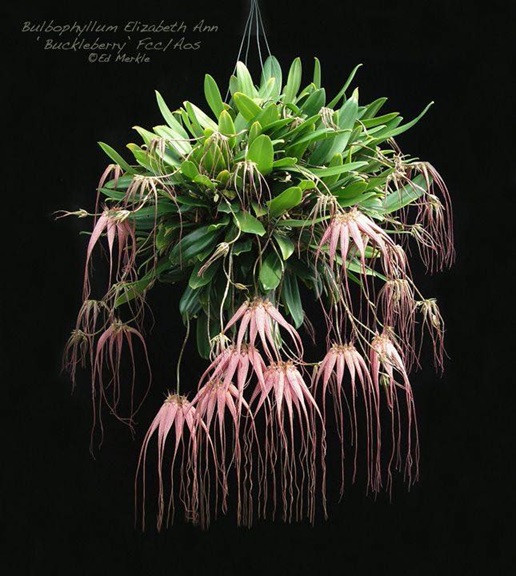
Bearded Bulbophyllum – A Stunning and Mysterious Display
The Bearded Bulbophyllum, scientifically known as Bulbophyllum medusae, is also nicknamed the Medusa Orchid, after the mythical Greek figure with a head of writhing snakes. This species is visually striking, with clusters of long, hair-like petals that cascade like flowing tendrils, creating an enchanting and mysterious appearance.
Characteristics of the Bearded Bulbophyllum:
-
Inflorescence: Flowers grow in a circular umbrella-like cluster. Each flower ends in long, soft, hanging filaments resembling delicate “beards” or hair strands.
-
Color: Typically ivory white, creamy yellow, or pale pink.
-
Fragrance: Emits a light sour or yeasty scent, but it's milder and more tolerable than that of many other Bulbophyllum species.
-
Bloom Duration: Flowers stay open for about 7 to 10 days, and when the whole cluster blooms simultaneously, it creates a breathtaking visual effect.
Bulbophyllum kanburiense (“Long-Petal” Bulbophyllum)
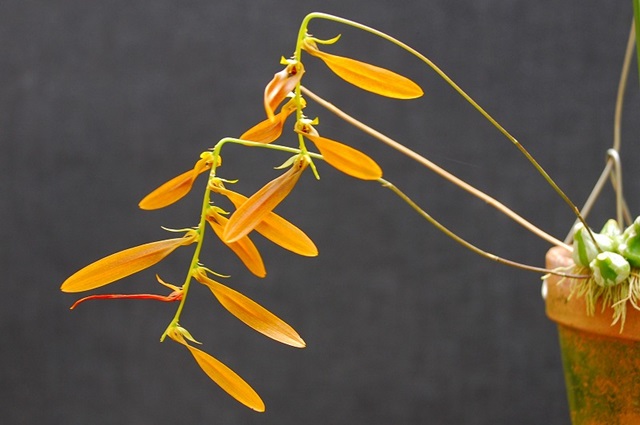
Long-Petal Bulbophyllum – A Delicate and Unusual Orchid
The Long-Petal Bulbophyllum, scientifically known as Bulbophyllum kanburiense, is a captivating wild orchid species recognized for its slender, gracefully curved petals. It is naturally found in the humid forests of Thailand, Laos, Cambodia, and parts of Vietnam.
Characteristics of the Long-Petal Bulbophyllum:
-
Pseudobulbs: Small, oval or egg-shaped, growing closely together; each pseudobulb supports a single, dark green leaf.
-
Flowers: Solitary blooms on long stalks. Petals are exceptionally long, slender, and often curved or slightly twisted at the tips.
-
Coloration: Flowers may be pinkish-purple, reddish-brown, or brownish-yellow, often accented with bold vertical stripes.
The labellum (lip) is very small and sensitive, swaying gently in the breeze to aid pollination. -
Fragrance: Emits a mild, fermented-like scent, characteristic of many Bulbophyllum species.
Striking Images of Bulbophyllum Orchids
Let’s now take a look at some stunning images of the most unusually shaped Bulbophyllum species to fully appreciate the artistic charm and collectible value of this extraordinary orchid genus.
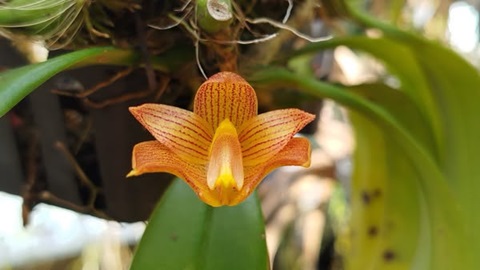
Striking Image of the Patens Hybrid Bulbophyllum
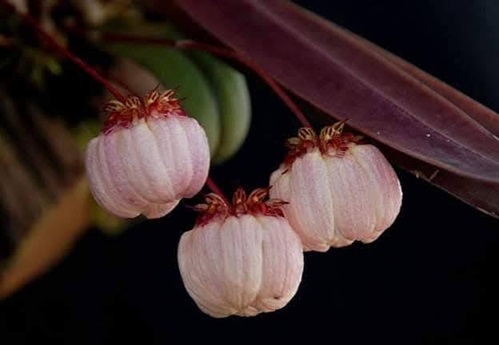
Wild Lantern-Shaped Bulbophyllum – Flowers Resembling Tiny Lanterns
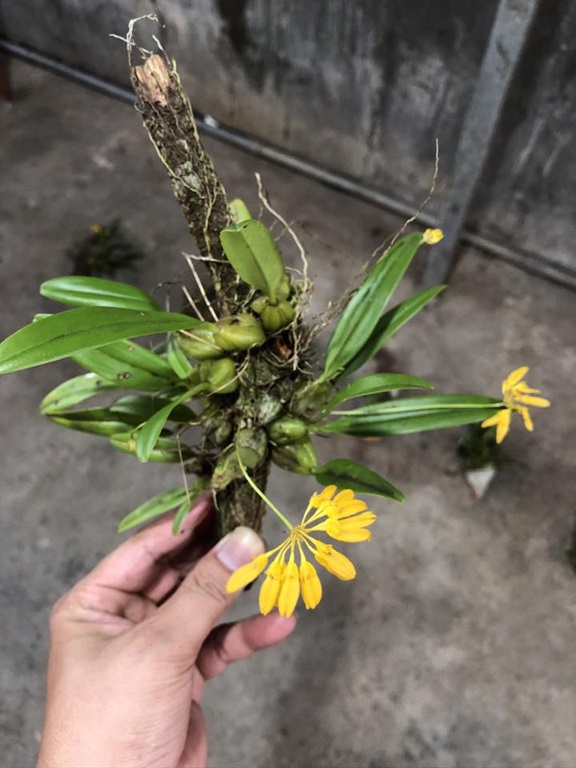
Golden Fan Bulbophyllum from Kon Tum – Bright and Beautiful
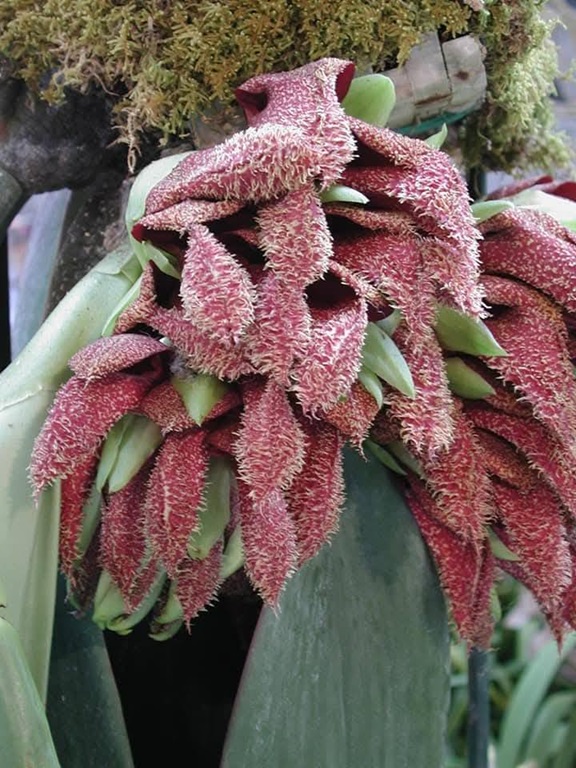
Giant Bulbophyllum – Bulbophyllum phalaenopsis

Bulbophyllum carunculatum – Bizarre and Bold
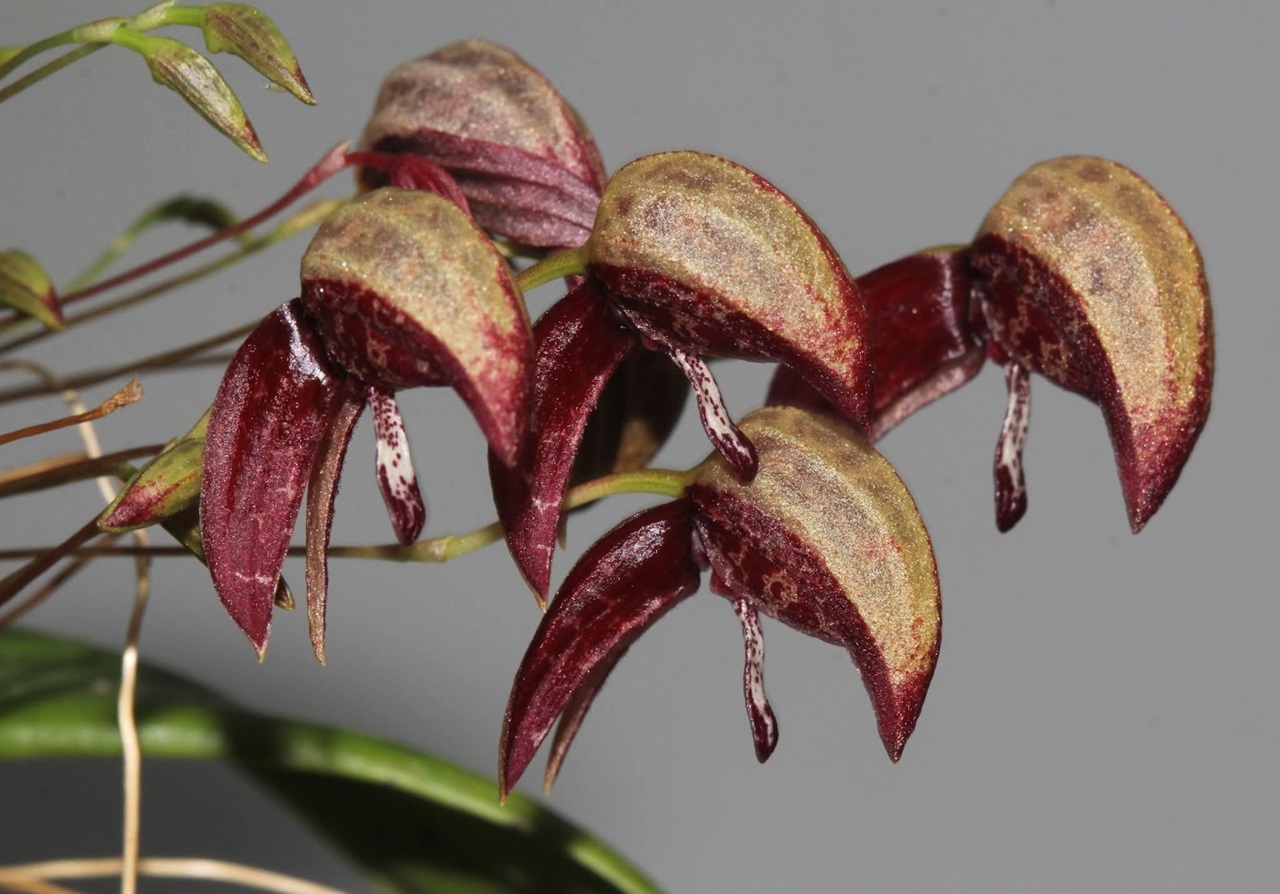
Claw-Like Bulbophyllum – Bulbophyllum maquilingense
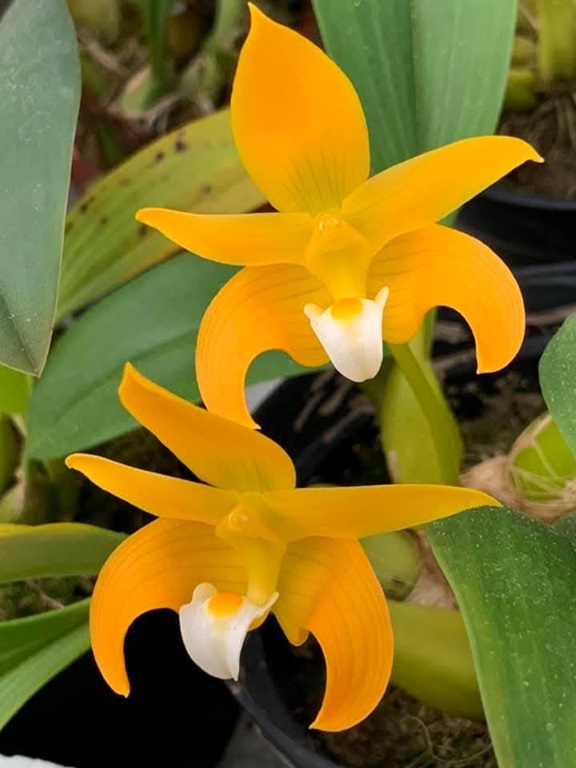
Flaming Orange Bulbophyllum – Bulbophyllum claptonense var. alba
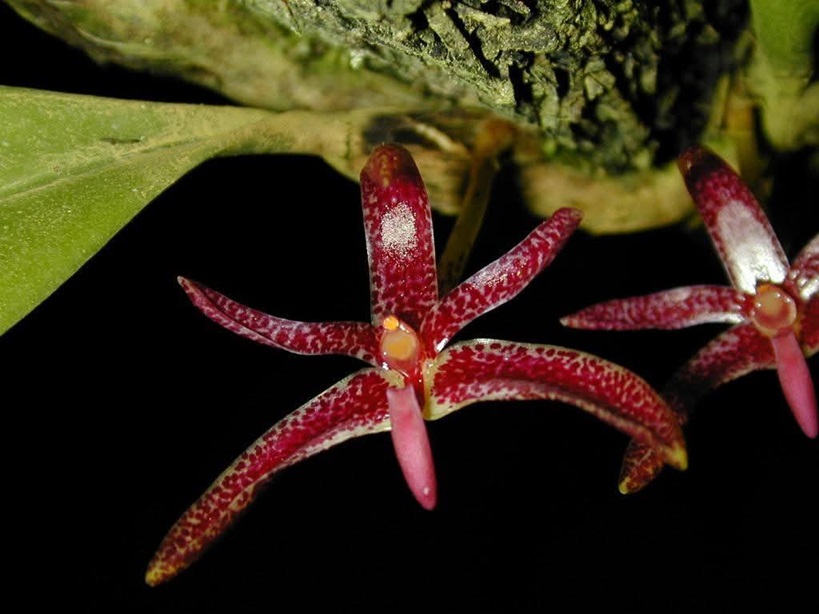
Demonic Bloom – Bulbophyllum patens
Through this article, orchid-vn.com has provided you with detailed insights into Bulbophyllum, one of the largest and most bizarrely shaped orchid genera in the world. We hope you now have a deeper understanding of the Bulb genus and have found some truly one-of-a-kind Bulbophyllum species to add to your orchid collection.
If you'd like to explore more about specific Bulbophyllum species or learn about other orchids, be sure to visit the Blog section of our website to discover more in-depth articles!
